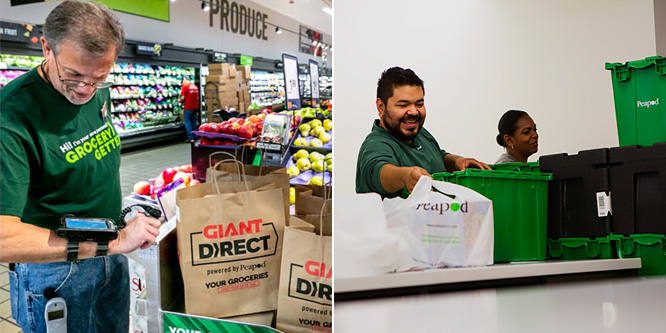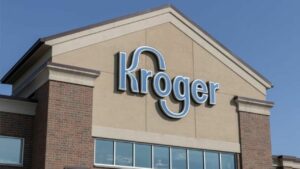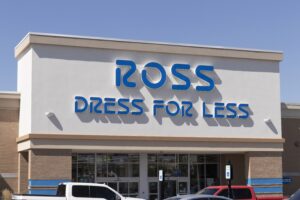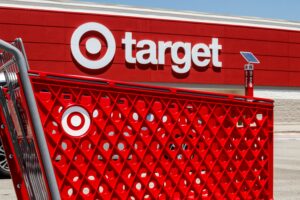
Photos: Giant Foods; Peapod Digital Labs
February 3, 2023
Ahold Delhaize USA’s Retail Business Services CIO talks IT’s place at the table and the need to work differently
Ahold Delhaize USA, the company behind Food Lion, Fresh Direct, Giant, The Giant Company, Hannaford and Stop & Shop, is among those that has structured its business to make sure that the humans behind the technological tools it uses are in a position to do the most good.
Rom Kosla, EVP and CIO of Ahold Delhaize USA, Retail Business Services, told RetailWire, “IT is a big part of the strategy of what the business is looking to do. We talk about it as the connected customer strategy and technology is an underpinning of a big part of that.”
Mr. Kosla, who joined the grocer in 2021 after more than 14 years at PepsiCo where his last assignment was as senior vice president & CIO enterprise solutions, said that his group is “involved in every aspect of strategic planning” and the “convergence of our business and IT coming together to [accomplish] the big things that we want to achieve as a company.”
IT at Ahold Delhaize USA, Mr. Kosla explains, resides within the company’s Retail Business Services unit, which supports each of the grocery giant’s individual chains as well as Peapod’s digital labs and supply chain.
Business relationship managers from IT “works closely with the leadership staff of every local brand,” said Mr. Kosla. “They are embedded at each of the brand headquarters, and we do quarterly top-to-top meetings with each brand leadership team to walk through how we’re doing on everything from how we operate across all the stores and support the stores, what are the current initiatives that we’re driving to help support IT investments, as well as our future planning on big things that we believe are important.”
Mr. Kosla said his group has had to rethink how it goes about its engineering work and how those solutions are delivered to its stakeholders. He said traditional IT organizations follow a waterfall model “where you divide something, you blueprint it, you develop it and then over time, six months to a year, you start to then deploy down in the business to finally get to see what they’ve delivered.”
Ahold Delhaize USA, he said, is “implementing a customer-focused approach on how we think about agile delivery. And that means more frequent engagements with both our regular brands and support brands, so that the solutions we’re delivering much more incrementally deliver value creation and, ultimately, we get that feedback loop much faster.”
Discussion Questions
DISCUSSION QUESTIONS: What is the proper role of information technology in the strategic planning process for retail organizations today? Do you see more pros or cons to the incremental implementation process that Ahold-Delhaize is adopting versus a traditional “waterfall” approach to IT engineering?
Poll
BrainTrust
David Spear
President, Retail, OrderlyMeds
Lisa Goller
B2B Content Strategist
Brandon Rael
Strategy & Operations Transformation Leader
Recent Discussions







Ahold Delhaize has this 100% right. Business process should start with the customer, and IT needs to be front and center in making sure the technology serves as the key enabler. Agile development processes are the key to implementing customer focused solutions that matter. The typical waterfall approach has you defining a requirement today and implementing it 12-18 months later when everything may have changed. Retailers don’t have anywhere close to even six months to react to trends and act on opportunities. Ground-level, IT-influenced decision-making and initiatives will help win the game.
With more than 2,000 stores across almost two dozen brands, the bottom-up approach sounds illogical. But it’s the only way to move forward at today’s pace. Agile is the only logical solution to that dilemma.
Incremental implementation allows for two critical things to happen. The first is to get some improvement implement so as to show progress. (This is more good PR for IT than beneficial to the company.) The second, is to get feedback more often and possibly change approach or direction, lest IT had begun to deploy something that isn’t so usable.
I’m extremely biased, but the proper role of IT is exactly as Mr. Kosla describes it. IT is no longer about managing computing power in boxes from cold, dark rooms. IT is in everything from running the business and the products to the physical and digital customer experiences we all aim to optimize.
There is no right way to implement IT. Some teams adopted Agile (a form of incremental implementation) over a decade ago and some teams remain waterfall (or waterfall-ish). The key is often the culture or the projects themselves. Unfortunately, it’s also strategic dysfunction — trying to “IT” your way out of business problems. Biased or not, the approach of inserting IT as a necessary, strategic partner is not only warranted but competitively sound.
The role of IT is always simple. It’s to support the growth and priorities of the business.
That goal changes relative to the needs of the business.
It needs to be aligned to a simple clear goal that will help it serve the needs of the entire business, while at the same time partnering across the business to drive results.
Full disclosure: Ahold Delhaize is a Revionics/Aptos client. Nonetheless, I can say with complete objectivity that I believe this is the exact right approach. Integrating IT leadership across brands, fueled by regular sharing of cross-brand successes, challenges and opportunities, is critical to maximizing IT investments and enterprise agility.
The role of IT is becoming an instrumental part of today’s retail business model because, more than any other function within the company, they have the best understanding of how digital works. E-commerce is blending more deeply with brick and mortar, retail media networks are following customer eyeballs into physical stores, data collection tools like cameras need to integrate with store security systems. Who better to understand and manage these important integrations than IT?
For the past decade, it has been nearly impossible to discuss retail trends without mentioning tech’s growing influence on companies and consumers. Especially since 2020, tech has proven its strategic significance in keeping retail companies resilient, efficient and competitive.
Business and IT strategies must be entwined vs. siloed to keep up with consumers’ habits and expectations. Ahold Delhaize’s engineering approach offers a faster feedback mechanism to support speed and continuous improvement.
Any strategic planning process has to start with an assessment of the business’s goals, where they can grow, where can they optimize, and where they need to change. Assess their value prop for their customers and what capabilities are required to meet those goals. Then, they can start thinking about what technologies are in play or are required to extend those capabilities and deliver on their goals.
Mr. Kosla is taking this approach. His idea that Ahold Delhaize will take a customer-centric approach to drive technology investment is spot on. I really love that IT and the Business are involved, at every level, in aligning their IT strategies with business objectives.
Too many companies chase squirrels investing in tools without ensuring alignment with the capabilities they need to leverage to meet their business goals.
Mr. Kosla is spot-on with the agile approach he’s taking with the business. The old waterfall approach is too slow, too cumbersome and doesn’t deliver value every week. It hinges on “grand reveals,” which, more often than not, are received with mixed results. Weekly playbacks are the way to go because they drive better collaboration, fostering the ability to pivot faster (doubling down on positive decisions or failing fast and restarting).
One key problem with the waterfall approach is delay, and business moves too fast for that now. Kudos to Mr. Kosla.
The biggest hurdle companies have implementing technology is that the techs don’t fully understand the business, and the line managers don’t fully understand what tech can do.
Ahold Delhaize USA has structured its business to ensure that the humans behind the technological tools it uses are in a position to do their best. Bravo. They are among the few retailers or few of any company to truly embrace the functions IT can add to the success of a company.
Considering the accelerated rate of consumer preferences changes in the grocery industry, a traditional waterfall IT strategy will no longer resonate in today’s economic climate. The Ahold Delhaize product and customer-centric approach, led by Rom Kosla and the Retail Business Services team, has built a collaborative business and IT model that has positioned the company for long-term growth. Key to Ahold Delhaize’s business transformation has been an agile and incremental approach to unlocking value while being mindful of the cost to serve.
A product-centric and agile value creation strategy, with a close collaboration between the IT and business teams, is critical to the long-term success of Ahold Delhaize. In a grocery industry impacted by rising operating costs, inflation, supply chain disruptions, labor shortages, and intense competition, Rom and the Ahold Delahize team have built a customer-first resilient model that will rise up to the challenges.
IT advances in grocery require adapting to what is often a patchwork of existing systems and inconsistencies across stores. Add to that the need to adapt to the needs of millions of customers and it’s easy to get bogged down and end up getting less done. Better to make smaller, more frequent progress and adapt to feedback.
With Ahold Delhaize USA, Mr. Kosla’s team has the added complexity of multiple brands, each with their own strategic priorities and existing systems. The approach to embed IT into the strategic planning at the brand level can help ensure that IT is serving the unique needs of each brand, while also ensuring that the big, corporate projects can be adapted and effectively executed across all brands.
One way this plays out for Ahold-Delhaize is with a cloud-based data platform they built called Fiona that helps them deal with the massive scale of data involved and the challenges of extracting the right insights from it. The agile process Mr. Kosla describes helped them build it, and organizationally it unlocks value by having data science workers embedded in the business and within IT collaborating to meet each business area’s requirements. It’s all part of the connected customer strategy.
I was curious what technology was used to build Fiona so I asked ChatGPT:
“Some of the key technologies used in Fiona include Apache Hadoop, Apache Spark, Apache Hive, Apache Cassandra, and Apache Airflow, among others. Additionally, the platform also makes use of cloud solutions such as Amazon Web Services (AWS) and Google Cloud Platform (GCP).”